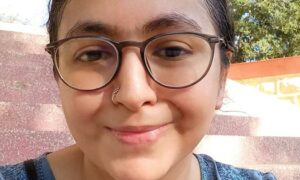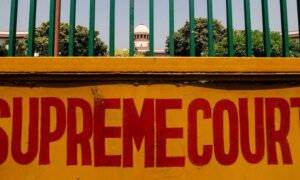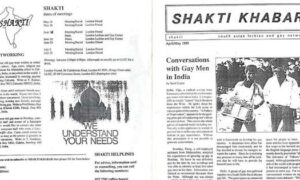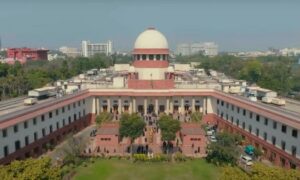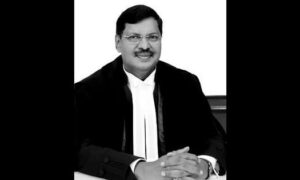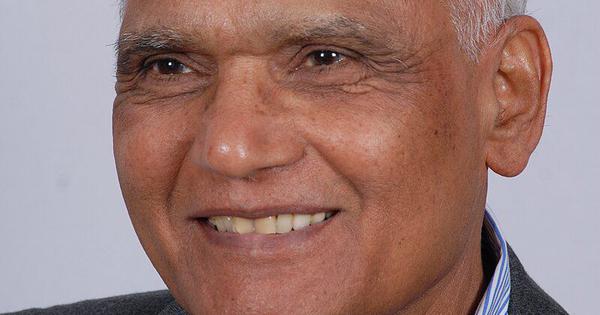
The Kannada litterateur Chitrashekhar Kanthi once asked me who, in my estimation, was the Kannada writer with the greatest storytelling skills. Twenty-six years ago, my understanding of literature had not grown beyond making judgments on what was good, bad or ugly. “Srikrishna Alanahalli,” I replied. Kanthi then wanted to know my choice from among the living writers. I told him that I admired SL Bhyrappa the most. “Why not Kum Veerabhadrappa or Poornachandra Tejaswi?” He asked me. “I regard them highly too,” I replied, “but not as much as Bhyrappa.”
Kanthi smiled, perhaps with a sense of disbelief. “Have you read Sartha?” he asked. This was Bhyrappa’s novel, published a year earlier (1998). “No,” I said. “Please do. You might reconsider your opinion.” Kanthi was right.
When Bhyrappa passed away on September 24 at the age of 94, it was this meeting with Kanthi in the autumn of 1999 that came to mind immediately. I can’t recall another meeting with Kanthi in which Bhyrappa was the subject of our discussion. In fact, it surprises me how little Bhyrappa has figured in my conversations with Kannada writers over the last 30 years, including the ones with Bhyrappa himself. This bestselling novelist, with his widely acclaimed mastery over the art of storytelling, is a riddle that is not easy to crack. He unites and divides Kannada readers too sharply to make any dialectical engagement meaningful.
Santeshivara Lingannaiah Bhyrappa was born in 1931 near Channarayapatna in the Hassan district of Karnataka. The landed family to which he belonged had lost much of its fortune after the death of his grandfather. Bhyrappa faced near destitution as a child, when bubonic plague took away his mother and siblings. His schooling in Nugehalli, Channarayapatna and Mysore went through severe financial challenges and a want of care. Before commencing higher studies (BA and MA in Philosophy from the University of Mysore and PhD from Maharaja Sayajirao University, Baroda), he tried to find work, which led him, among other things, to be a scullion at a restaurant in Ranibennur, an accountant with a drama troupe in Byadagi, and a railway porter in what was then Bombay. Bhyrappa commenced his teaching career in a college in Karnataka and retired in 1991 from the Regional College of Education, Mysore, serving institutions such as the NCERT and Sardar Patel University, Anand.
Subtle ideology
Bhyrappa shot to fame with his 1965 novel Vamsavriksha. He had already published half a dozen books by this time, including two novels that became best sellers after the success of Vamsavriksha, Matadana (1965) and Dharmasree (1961). His oeuvre consists of 24 novels and Bhitti, his 1996 autobiography, and a few volumes of literary criticism. These works won him numerous laurels, including the best literary awards in Karnataka (Nadoja Award, Pampa Award, and Nripatunga Award), the Padma Shri in 2016, and the Padma Bhushan in 2023.
Bhyrappa was a Hindutva ideologue who was subtle in presenting his ideology in his early works but vocal since the late 1990s. His works often voiced the political agenda that the RSS had promoted from time to time. The novel Tabbaliu Neenade Magane, which examines the question of cow slaughter, was published in 1968. No reader of the novel is known to have levelled charges against it for promoting Hindutva. But the fact remains that it appeared not long after the rally in Delhi in November 1966, calling for legislation against cow slaughter, a massive event in which 1,00,000 people participated.
Another 1968 novel, Naayi Neralu, advocated widow remarriage, but the widow is not seen making claims over her late husband’s property. Oldtimers in the RSS might recall that the organisation was unhappy with the Rajasthan High Court judgement in the 1967 Bhuri Bai vs Champi Bai case, in which the court upheld the defendant’s right to own her deceased husband’s property after she had remarried.
Daatu appeared in 1973. It portrayed the futility of the caste system so convincingly that it won the Sahitya Akademi Award from the Indira Gandhi regime in 1975. What remains to be acknowledged is the fact that the novel also describes, rather disturbingly, the futility of the fight against the caste system.
The Dalit movement was on the rise in the early 1970s. The Samajwadi Yuvjan Sabha organised the historic Jati Vinasha Sammelana (Conference on the Annihilation of Caste) in Mysore in 1973, and a year earlier, the Dalit Panthers was established in Maharashtra. Sartha, which carries Bhyrappa’s first graphic descriptions of Muslim fanaticism, was published in 1998, the year Atal Bihari Vajpayee was sworn in as Prime Minister. Avarana, the novel with a contentious narrative on religious conversion, appeared in 2007 and was used by the BJP in its Operation Kamala electoral campaign that brought BS Yediyurappa to power in Karnataka in 2008.
When Bhyrappa commenced writing in the mid-1950s, the influence of progressive (pragatisheela) writers had begun to decline and modernist (navya) writings were on the rise. The novels and stories of Shantinath Desai, UR Anantamurthy, Yashwanth Chittal, BC Ramachandra Sharma, and K Sadashiva raised new philosophical and psychological questions that interrogated tradition and modernity in critical ways. At the same time, there was also the apprehension that the craft they perfected and the concerns that they raised were derivative and largely alien to the existing Indian realities, both urban and rural.
A fractured modernity
Newer approaches emerged from the late 1960s in the works of Poornachandra Tejaswi, Devanoora Mahadeva, Srikrishna Allanhalli, and Besagarahalli Ramana, but these weren’t charitable to the vexed question of tradition, especially in relation to caste, religion and gender. These writings impressed a distinct leftist and centre-left reading constituency, known today by an oxymoron, the left-liberal. The left-liberal readers also consisted of advocates of the back-to-the-roots movement. They rejected the Vedic and Puranic Hinduism and redefined tradition from a bhakti or a subaltern vantage point, alternatives that came to be described, rather hastily, as perpetual rebellions against orthodoxy.
There was a huge section of readers whom these writings didn’t address. Consisting mostly of upper caste men and women drawn in opposite directions by the conflicting pulls of tradition and modernity, these readers wanted to be modern while remaining rooted in tradition. This could happen only when tradition was more of an ethos than a lived reality. At the same time, the most cherished aspects of their tradition had to be interpreted in modern terms as historical, scientific, and philosophically deep-rooted. These readers were, in Sanjay Joshi’s words, embodiments of a “fractured modernity.” Bhyrappa’s writings enchanted this readership.
To begin with, Bhyrappa didn’t experiment with craft (although he tried his hand at stream of consciousness in his 1976 novel Anveshana and extended monologues in his 1978 masterpiece, Parva). He told stories with the simplicity of a balladeer. A populist approach permeated this mode of storytelling, which made a reader get into the story smoothly without being enticed in other directions by the charms of language. In this sense, he was a master of storytelling, not because of the beauty of his craft, but the effortlessness of his narration. This already placed him ahead of his modernist peers.
Bhyrappa brought an epic gaze to his writings, which made them even more gripping as it were. The themes that he explored were invariably centred on the conflict of values between tradition and modernity. This make-believe binary frames his works in two ways. One of them, explored in novels such as Dharmasree, Jalapata, and Matadana, represents modern life as a bottomless abyss, characterising an ethical collapse, a crisis resulting from the decline of tradition. That modern life can lead tradition astray is a recurrent concern in the novels, making a discerning reader wonder why Bhyrappa, for all his love of tradition, characterises it as easily given to deterioration.
The other approach, noticed in Parva, Sartha, and most recently in Uttarakanda (2017), interrogates tradition in an attempt to recover its patriarchally-laced humanist values. In doing so, tradition is made to unfurl as an ethos that provides the strength to persevere in the wake of adversities. Tradition is not a way of life. In fact, this way-of-life approach is at times rejected ruthlessly.
Parva rebukes statecraft (rajadharma) as mere gambling, war, hunting, and concubinage, while Uttarakanda raises the question of injustice meted out to Sita in the Ramayana (which earned Bhyrappa praise from no less a rival than the late Gauri Lankesh). In the wake of an ethical crisis, tradition as an ethos provides the strength to endure or, if things come to a point of no return, annihilate oneself. This is a message that is embedded like a substratum in works such as Parva, Sakshi (1986), Jalapata (1967), Mandra (2001) and Dharmasree.
Before Sartha appeared, Bhyrappa depicted tradition as a morally and normatively informed state of mind, which is a wellspring of perseverance. Oftentimes, the strength to keep going rested in the woman when she performed her normative gender roles with diligence (as with Nanjamma in Grihabhanga (1970) and Kunti in Parva). Beginning with Sartha, there was a disturbing change. In his public pronouncements, Bhyrappa openly categorised the Semitic faiths and communism as India’s greatest enemies. In the novels, perseverance began to make way for a vehement, reactionary ethos. In terms of his political persuasions, this was the same old Bhyrappa of the 1960s, but his responses suggested that there was in him now a new Bhyrappa. He wasn’t keen on persevering anymore. He was impatient. He had reached the precipice of creativity.
For all my reservations against Bhyrappa, I cannot forget how spellbound I was when I read Parva and Mandra. How, then, could I forget to include the latter in the list, when two decades ago, I was invited to shortlist works from Kannada for the prestigious Saraswati Samman? I am happy that the jury decided to award Mandra the prize in 2010, the first Saraswati Samman for Kannada. When I told him of the humble role I had played in bringing him the award, he held my hands and smiled like a child, his eyes sparkling. I will never forget the smile.
Manu V Devadevan is a historian known for his works on pre-modern south India.
📰 Crime Today News is proudly sponsored by DRYFRUIT & CO – A Brand by eFabby Global LLC
Design & Developed by Yes Mom Hosting

